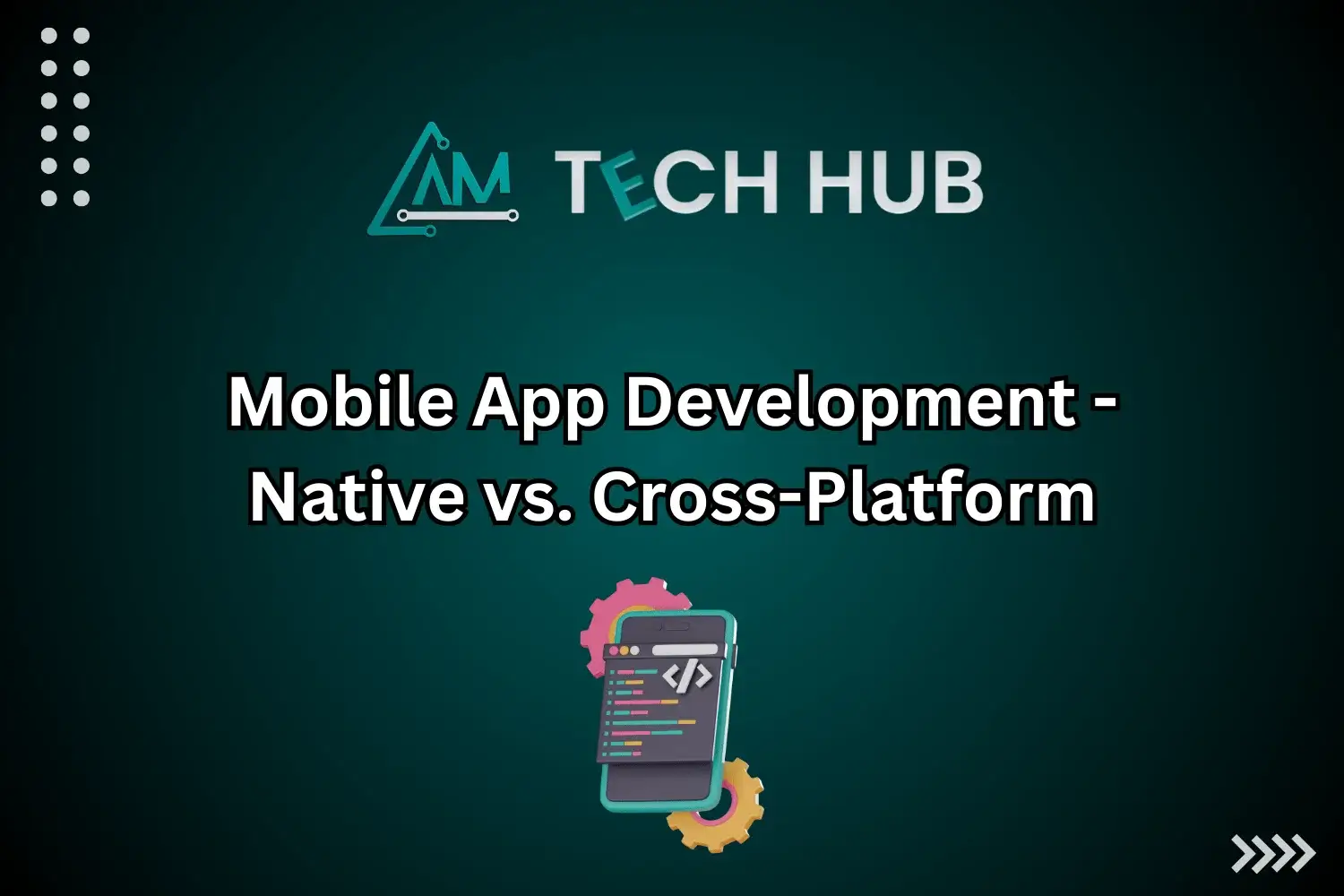In the technologically advanced era, everyone wants to make a mark in the app market. The decision to choose between native and cross-platform mobile app development can be tricky, but it is considered one of the most important decisions in app-developing businesses.
Whether native or cross-platform, each approach has unique strengths and limitations. A thorough understanding of each approach can help you select the category that best suits your business goals.
In this guide, let’s explore both of them and weigh the pros and cons to decide which might be the best fit for your business.
Understanding Native and Cross-Platform Development
Let’s delve into the notions of Native and Cross-Platform Mobile App Development.
Native Development
When we talk about Native App Development, it means the app is particularly designed for a single platform i.e. iOS or Android. For iOS, specific programming languages like Swift or Objective-C, while Kotlin or Java are used for Androids.
Native apps are known for high performance, smooth user experience, and deep integration with device features.
Cross-Platform Development
Cross-platform app development is a single codebase connection to multiple platforms like Flutter, Xamarin, or React Native. This app development platform enables developers to write code once and deploy it across iOS and Android.
The best thing about using this approach is that it saves development time, but developers may face certain limitations when compared to native apps.
Choosing between these approaches is mainly a matter of your business needs, timeline, budget, and goals.
Let me uncover the Pros and Cons of each approach for your convenience!
Pros of Native Development
Have a look on the advantages of the Native App Development approach!
Superior performance and speed
Native apps are specifically designed for one platform, thus allowing developers to utilise the device’s full potential. The developers can optimise the app’s performance, delivering fast load times, smoother animations, and better responsiveness by using platform-specific tools.
These tools offer superior performance, leading to higher user satisfaction and encouraging more downloads, usage, and retention for your business’s app success.
Enhanced user experience
Native apps offer a more consistent and enhanced user experience. They adhere to specific design guidelines for each platform, ensuring the app feels familiar to users on iOS or Android. Developers also offer customised designs, layouts, and navigation to meet the expectations of users on each platform.
Your business’s app is strengthened with positive app reviews, higher customer satisfaction, and increased engagement.
Better access to device features
Native app development uses platform-specific code, enabling developers to get access to all device functionalities such as cameras, GPS, contacts, and more. Thus, the seamless integration with other native apps and services allows developers to create feature-enriched applications.
Native development allows better access and control, making it a solid choice for delivering an advanced user experience.
Higher Security
Native apps offer a higher level of security through built-in security features and protocols of the platform. They can implement best practices like multi-factor authentication and data encryption to make sure that sensitive user information is protected.
Cons of Native development
Let’s have a look at the disadvantages of the Native app development!
Higher development costs
While using the Native app development approach, developers may face higher development cost issues.
In this approach, developers can not use a single codebase for multiple connections thus creating separate codebases for iOS and Android requires a team of developers for each platform, which can increase costs significantly. Moreover, maintaining two codebases can add to ongoing costs.
Longer development time
The native approach takes a longer duration in app development. In the case of developing apps for two platforms, more time is required to create, test, and maintain the app individually. In this speedy world, it might impact your business.

Pros of Cross-Platform Development
Let’s have a look at the advantages of the Cross-Platform Development app!
Cost-friendly development
In cross-platform development, you can use a single codebase for both iOS and Android. It reduces development time and cost. Tools like Flutter and React Native enable developers to share 80–90% of the code, thus lowering the resources needed.
If you have a limited budget for app business setup, you can look for Cross-platform development. It provides a faster, more affordable way to enter the app market without sacrificing quality.
Faster time to market
Since cross-platform development allows for simultaneous deployment on both platforms, you can launch your app more quickly. This accelerated time to market is valuable for startups and businesses in competitive fields.
Faster time to market means you can start generating revenue sooner.
Wider audience reach
A single codebase for both platforms ensures your app reaches a broader audience. Cross-platform development provides users access to iOS and Android without requiring separate builds. A massive audience means more potential customers, increasing visibility, business recognition, and growth.
Easier maintenance and updates
Maintaining a single codebase is simpler and easier than managing two separate ones. When updates are needed, developers can implement changes across both platforms at once, thus making app maintenance faster and more convenient.
Cons of Cross-Platform Development
Let’s talk about the disadvantages of cross-platform development.
Performance limitations
Cross-platform apps may limit the performance while handling resource-intensive tasks such as complex animations or advanced graphics. This is because cross-platform tools may not be able to fully leverage device-specific optimizations.
Limited access to Platform-specific features
Cross-platform frameworks may have limited access to certain device functionalities, which could restrict your app’s capabilities. Some features may require custom development, which can increase the complexity and cost of development.

Key Considerations for Your Business:
Keep the following things in notice while choosing the best fit approach for your business.
Type of application
For high-performance apps with complex animations, you can go for the Native Development approach. Cross-platform development can deliver quality without compromise for apps like e-commerce or social media.
Budget and Resources
Native development tends to be more expensive due to the need for specialised developers for each platform. Cross-platform is a cost-friendly option if budget is a priority.
Time to Market
For a quick app launch, choose cross-platform development that helps you meet tight deadlines, but if you have time and performance and quality matter, then opt for the Native platform for developing apps.
User experience requirements
Native apps offer the best user experience tailored to each platform’s design guidelines. If providing a seamless and platform-specific user experience is essential to your brand, native development may be worth the investment.
Which is right for your business?
Both native and cross-platform development have unique advantages that can benefit your business.
If your top priorities are performance, access to all device features, and enhanced user experience, then native development is the way to go.
On the other hand, if you’re a startup and have a limited budget, or want to reach a broader audience quickly, cross-platform development is a smart choice.
Final Words
To conclude, the decision between native and cross-platform development ultimately comes down to your business goals, audience needs, and available resources. A well-made app, regardless of the approach, can be a valuable asset to your business.
Take time to assess your priorities, consult with development experts, and weigh the pros and cons carefully for a long-run success.



